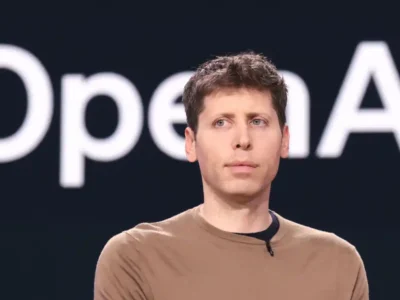Key Points
- Microsoft unveils MAI-Voice-1 and MAI-1-preview AI models
- MAI-Voice-1 can generate audio in under 1 second on one GPU
- MAI-1-preview trained using 15,000 Nvidia H100 GPUs
- Microsoft AI models challenge OpenAI’s GPT-5 directly
Microsoft AI models have officially arrived—and they’re here to shake up the industry.
The tech giant announced two homegrown models: MAI-Voice-1 for speech and MAI-1-preview for text generation. This is the first time Microsoft has released proprietary models designed to compete directly with the likes of GPT-5, Claude, and DeepSeek.
This move signals a shift from relying solely on OpenAI’s models to building a Microsoft-led AI ecosystem. And with it, the company is carving a new path focused not on enterprises, but real-world consumer experiences.
Excited to share our first @MicrosoftAI in-house models: MAI-Voice-1 and MAI-1-preview. Details and how you can test below, with lots more to come⬇️ pic.twitter.com/LtL2YmzuTv
— Mustafa Suleyman (@mustafasuleyman) August 28, 2025
MAI-Voice-1 is a standout. It can generate 60 seconds of speech in under one second using just one GPU. The model is already live in Copilot Daily, which reads out daily news summaries using natural-sounding AI voices.
It also powers podcast-style explainers and content built to help users understand complex topics in simple language.
You can test out MAI-Voice-1 today in Copilot Labs, where users can type in prompts, tweak voice styles, and hear the result instantly. For developers, educators, and creators, this opens new possibilities for fast, customizable audio content.
Microsoft now has their own foundation model, MAI-1 trained on a relatively small amount of compute and with a pretty modest LM Arena score.
I’ll be curious to see if they can catch up to the leaders, which has been something that has been getting hard to do, but we will see! pic.twitter.com/iblFE3H4qJ
— Ethan Mollick (@emollick) August 28, 2025
MAI-1-preview steps up to challenge GPT-5
If voice is one pillar, text is the other, and MAI-1-preview shows Microsoft is playing to win.
This large language model was trained using an astonishing 15,000 Nvidia H100 GPUs, making it one of the most powerful consumer-focused models released to date. According to Microsoft, the model is built to handle instructions, follow logic, and respond helpfully to a wide variety of questions and tasks.
Unlike OpenAI, whose tools are designed to serve both enterprises and consumers, Microsoft AI models are tuned specifically for consumer interactions. They are deeply integrated with Microsoft’s ecosystem and designed to serve users within apps like Copilot, Bing, and future Windows features.
Big milestone at Microsoft AI: our first in-house models are here. https://t.co/xOLlQ5gSFk
🔊 MAI-Voice-1: Fast, expressive speech gen now in Copilot Daily & Labs. Storytelling, meditations, choose-your-own-adventures — all from a single prompt.
💬 MAI-1-preview: Our first…
— Dave Citron (@DaveCitron) August 28, 2025
Mustafa Suleyman, head of Microsoft AI, previously emphasized this consumer-first approach. “We have to create something that works extremely well for the consumer,” he said.
With access to massive consumer data from ads, products, and usage patterns, Microsoft aims to build AI companions that understand users better than ever.
Currently, MAI-1-preview is being tested inside Copilot and is also available for public benchmarking through LMArena, a platform used to evaluate AI performance across various models.
Microsoft AI models signal a long-term independence plan
The debut of Microsoft AI models doesn’t just expand its AI offerings; it marks a strategic pivot.
For years, Microsoft has leaned heavily on OpenAI’s models to power tools like Bing Chat and Microsoft Copilot. But with its own models now in play, Microsoft is reducing its dependency and investing in a future it can fully control.
The plan is clear: build an ecosystem of specialized models, each serving a different use case. Speech, text, productivity, entertainment, Microsoft wants to orchestrate AI across every layer of its tech stack.
In a recent blog post, the Microsoft AI team said:
“We believe that orchestrating a range of specialized models serving different user intents and use cases will unlock immense value.”
This model diversity will allow Microsoft to offer more personalized experiences without needing to go through third parties.
Microsoft starts testing AI model that could escalate competition with OpenAI
Microsoft has unveiled its first home-grown foundation model, MAI-1-preview, trained on 15,000 Nvidia H100 GPUs. It also introduced MAI-Voice-1, a super-fast voice generation model.
These moves signal… pic.twitter.com/OmYbn4Ubfv
— wR (@WeReporter) August 28, 2025
It also gives them more control over privacy, performance, and data policies, similar to how other players like Anthropic manage their data policies in alignment with safety and transparency.
More importantly, this move offers Microsoft the freedom to innovate independently, while still benefiting from its OpenAI partnership in the short term. Instead of being locked into one provider, Microsoft is now both a customer and a competitor in the AI race.
What this means for the future of Microsoft AI
The launch of Microsoft AI models is more than just a tech update, it’s a signal that Microsoft is building for the long game in AI.
By developing its own models like MAI-Voice-1 and MAI-1-preview, Microsoft is crafting a future where its AI experiences are entirely owned, optimized, and integrated into its platforms.
This not only allows deeper innovation but also gives Microsoft a clear edge over competitors who rely on third-party models.
And with consumer-focused AI becoming the next big battleground, Microsoft is positioning itself as a key leader, not just through investment, but through direct innovation.
While OpenAI and Microsoft still share close ties, the introduction of in-house models means that the future of Copilot, Bing, and other tools may soon rely more on Microsoft AI models than anything else.
As these models roll out further, expect Microsoft to double down on personalized AI tools, more integrated features across Windows and Office, and faster iteration cycles thanks to its in-house control.







